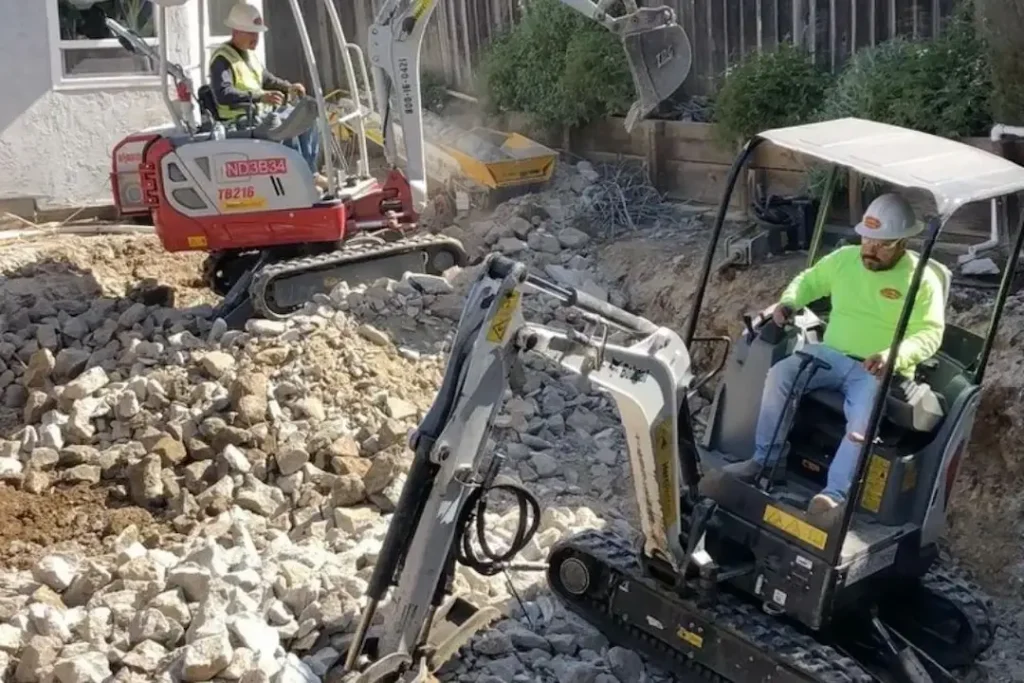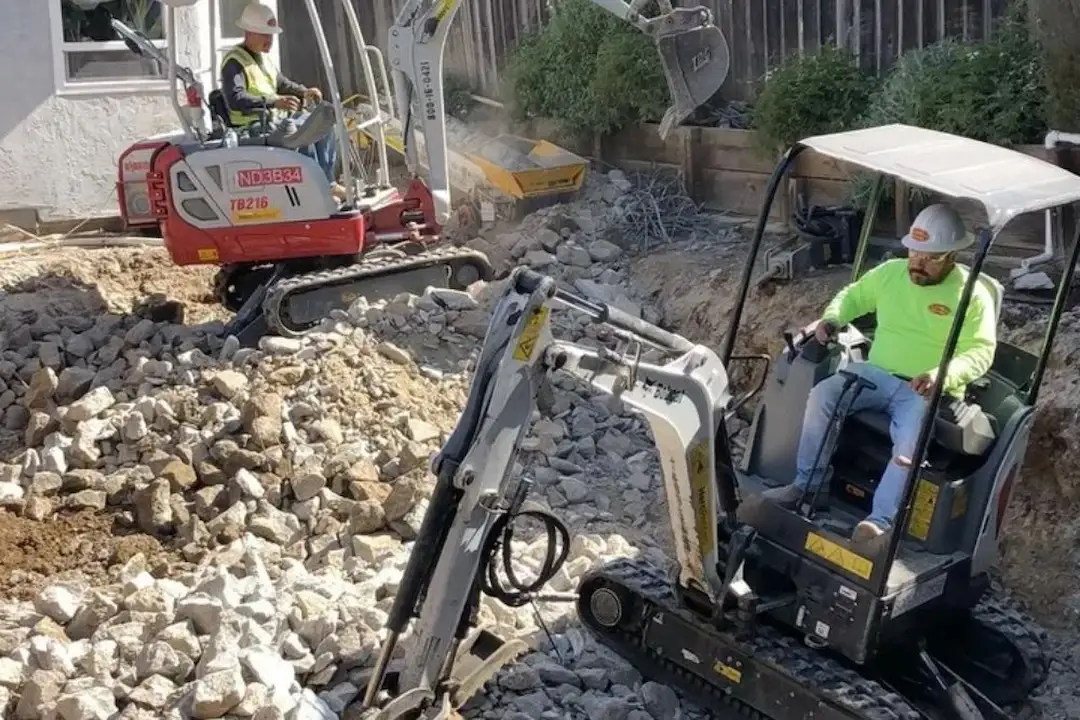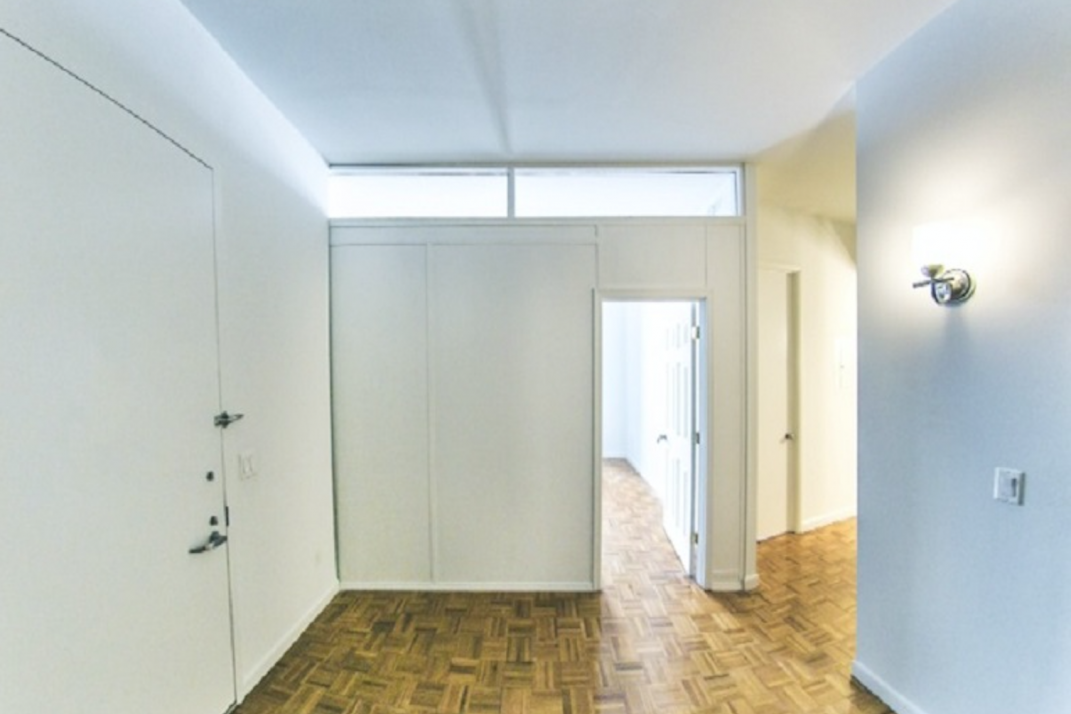If you’re planning to remove an existing pool and reclaim your backyard, understanding how to work with a qualified demolition contractor is crucial. Whether you’re dealing with a full pool tear-out or simply converting the space into a usable yard, the process of pool demolition and swimming pool removal involves more than just filling in the old hole. In this article, we’ll walk you through how to hire the right demolition contractor and what to expect from the pool removal process from start to finish.

Content
1. Understand What Pool Demolition and Swimming Pool Removal Entail
Before you begin searching for a professional, it helps to know what the terms mean and why the work isn’t as simple as it appears.
- Pool demolition refers to the process of breaking down the pool structure (e.g., concrete shell, steel rebar, coping) and removing it safely.
- Swimming pool removal often means filling in the void created by the pool and restoring the surface so it can be used for a new purpose (patio, lawn, garden).
- A good demolition contractor will know how to handle permits, utility lines, structural concerns, proper compaction of fill material, and final grading.
- Many homeowners underestimate the hazards: leaving old liner or structure can cause settling, water collection or collapse. For instance, retained pockets of moisture can lead to mud or even instability under the former pool footprint.
Understanding that you’re dealing with more than just filling in helps you set realistic expectations—and choose a contractor who addresses every step.
2. Define Your Goals and Scope Early
When you sit down with a contractor, it helps if you already know what you want the completed space to look like. Consider:
- Do you want complete removal of the pool structure, or simply a “fill and cover” option?
- What will you use the newly freed space for? (e.g., garden, flat lawn, patio)
- Are there any additional structures, decking, coping or equipment (heaters, pumps) to remove?
- Is access restricted (trees, fencing, steep slopes) which may affect cost and method?
By clarifying your objectives, you’ll be able to ask better questions and evaluate which demolition contractor is properly aligned with your needs.
3. What to Look for in a Professional Demolition Contractor
Not all contractors are created equal. Here are key attributes to look for:
Permit and Code Knowledge
A qualified professional will manage the permitting process required by your local municipality, ensure utility lines are identified and capped correctly, and conform to local safety and environmental regulations.
Equipment and Experience
Pool structures—especially older concrete or gunite shells—are substantial. A contractor should have access to heavy equipment (excavator, hydraulic breaker, etc.) and know how to safely demolish and remove concrete or fiberglass pools, in a way that prevents damage to surrounding property.
Site Preparation, Fill and Compaction
After removing the pool shell, the site needs to be properly backfilled, compacted and graded so the new surface will settle evenly, with no future voids or sink holes. Your demolition contractor should explain how they handle this process and what materials they use.
Safety and Waste Disposal
Demolition involves dust, debris, possible lead or asbestos (in very old installations), and needs proper disposal. Ensure your contractor handles safety protocols, dust control, and legal disposal of demolition waste.
Transparent Estimate and Timeline
Ask for a written estimate that outlines scope of work, what is included (demolition, removal, backfill, grading), and approximate timeline. A good demolition contractor will also explain cost factors: size/depth of pool, materials, access, equipment, local disposal costs, etc.
4. Step-by-Step: What to Expect During the Swimming Pool Removal
Once you hire your contractor, the process will generally follow the steps below:
- Obtain Permits and Utility Clearances
The contractor arranges for necessary permits and inspects for buried utilities, gas lines, electrical, water and sewer connections. - Drain and Remove Pool Equipment
All water is pumped out or drained according to local requirements. Equipment such as pumps, heaters, covers, ladders, and accessories are removed. - Demolition of Pool Structure
The pool shell (and possibly surrounding concrete decking) is demolished. For concrete or gunite pools this means breaking the shell into manageable pieces. In some cases, partial removal (i.e., floor removed but shell walls left and filled) may be an option. - Backfill and Compaction
After demolition comes filling in the void with soil, gravel, or engineered fill. The contractor compacts the fill in lifts to prevent future settling. The site is graded to drain correctly. - Surface Restoration
The final surface is prepared according to your plans—whether it’s lawn, patio or garden. The area should be cleaned of debris and ready for landscaping. - Final Inspection and Sign-off
Some jurisdictions require a final inspection. Make sure all permits are closed and you receive documentation of completion.
5. Key Questions to Ask Your Demolition Contractor
To ensure you hire the right partner, ask these:
- What method do you use for pool demolition (full vs partial)?
- How will you handle buried utilities, permits and inspections?
- What material will you use to backfill and how many passes will you compact?
- What is the timeline from start to finish?
- How do you handle debris removal and disposal?
- Can you provide references or examples of similar swimming pool removal projects?
- What happens if there are unexpected conditions (e.g., buried rock, soil issues)?
6. Benefits of Choosing a Professional
Going with a licensed, experienced demolition contractor offers major advantages:
- Peace of mind knowing the job will be done safely and properly.
- Avoidance of future problems like sink holes, unstable fill or improper drainage.
- Time savings: professionals have the equipment, crew and expertise.
- Potential cost savings in the long-run by avoiding DIY mistakes or permit fines.
- More usable and appealing yard space: after pool removal you gain freedom to redesign.
7. Final Tips Before You Proceed
- Always get multiple quotes from reputable contractors and compare not just price but scope, quality of backfill, timeline and cleanup plan.
- Verify contractor insurance and licenses; ask specifically about experience with swimming pool demolition.
- Make sure the timeline aligns with your goal (especially if you are planning subsequent landscaping).
- Consider future use: will your new space require additional grading or drainage?
- Retain all records and permits for future resale or home-value documentation.
By understanding the full process of pool demolition and swimming pool removal—and asking the right questions—you’ll be well equipped to hire the ideal demolition contractor for your backyard transformation. With the right team in place, you’ll soon reclaim your yard and turn an outdated pool into a fresh space you’ll actually use.

Elena Mohr is a dedicated home blogger who has been blogging for over six years. She covers everything home related. Elena also loves writing posts about her travels to Europe with her husband and two children.












